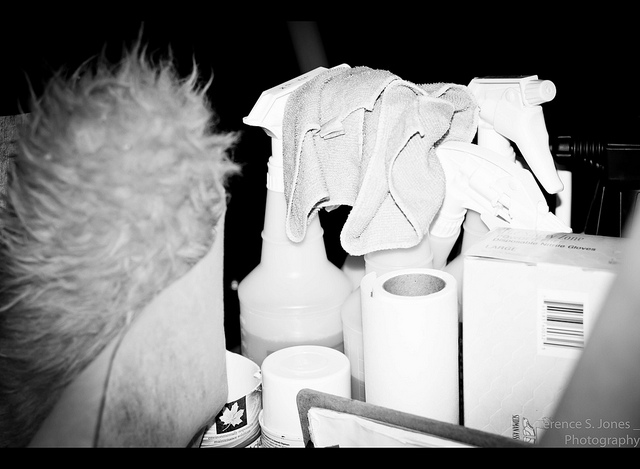Last week we found out that many popular household cleaners have hidden toxic chemicals. Tide Free & Gentle, Simple Green Naturals, Glade Touch Odor, Clorox Clean Up, Bounce Free & Sensitive and multiple air fresheners made the list of products tested and were found to have carcinogens, reproductive toxins, endocrine disruptors and allergens.
We own them, now know they’re toxic and want to get rid of them. What do we do?
After hearing about the report, many Groovy Green Livin readers contacted me letting me know that they were switching to green, non-toxic cleaners and some were even attempting to make their own (the greenest option out there!). Now the question becomes what to do with all the old, toxic cleaners taking up unwanted space in our cupboards and cabinets.
Here’s what NOT to do with toxic cleaners:
- DON’T flush them. Flushing toxins down your toilet could potentially contaminate waterways.
- DON’T pour them down the drain. These toxins could end up polluting a river, lake or stream.
- DON’T dump them in your yard. They will end up poisoning plants, animals and you.
- DON’T throw them away in the trash or recycle bin. It’s actually illegal to throw hazardous waste in with your trash. They will end up in a landfill where they leak into the soil and air.
- DON’T burn them. This could cause poisonous fumes, a dangerous explosion and air pollution.
Here are a few tips to help you safely dispose of toxic cleaning supplies:
- Treat cleaning supplies as hazardous waste. Hazardous waste is any product that is poisonous or toxic, can catch on fire or could mix with other chemicals and cause an explosion or dangerous reaction.
- Check in with Earth911.com for disposal rules in your area. Just type in your zip and your options will appear. I typed in “household cleaners” and my zip code. A number of hazardous waste collection programs came up.
- Many cities and towns have regular collection days or local collection sites that can take the toxics off your hands and dispose of them properly. Contact your local Department of Public Works for more options.
If you want to know what’s in your cleaning supplies make your own!
My favorite ingredients for DIY cleaners are:
- Baking soda
- Vinegar
- Water
- Tea tree oil
- Castile soap
What are some of your favorite DIY home cleaner recipes?
[Photo used under Creative Commons from Terrance S. Jones/Flickr]

